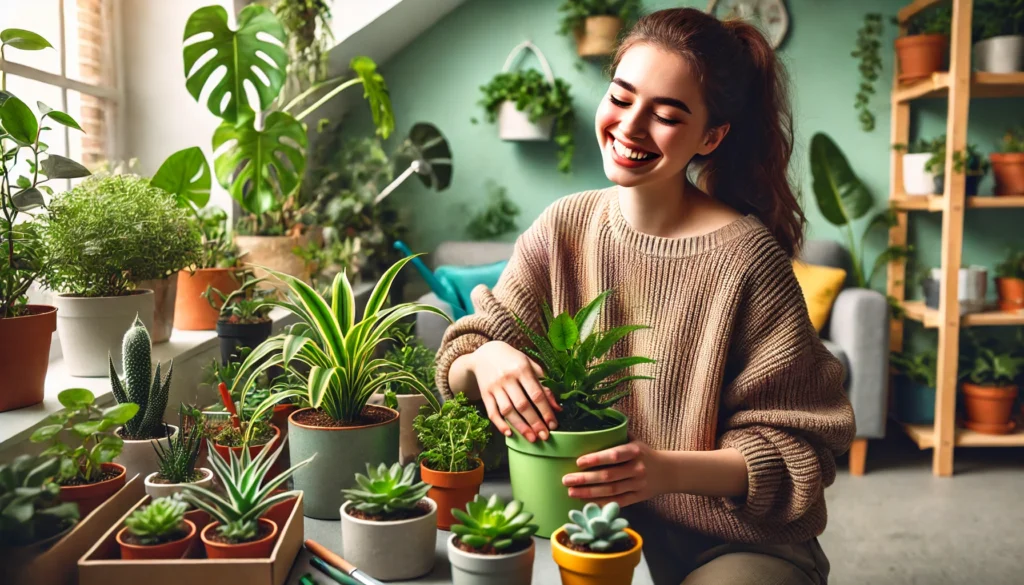
Common Beginner Houseplant Questions: Essential Tips for New Plant Parents
Starting your journey as a plant parent can be both exciting and overwhelming, especially when you’re faced with a multitude of decisions about caring for your new leafy friends. If you’re a beginner, you’re probably asking a lot of questions—and you’re not alone! In this article, we’ll address some of the most common beginner houseplant questions, offering essential tips and practical advice to help you succeed. Whether it’s understanding how often to water, the best lighting conditions, or how to spot signs of stress, we’ve got you covered with everything you need to ensure your plants thrive. Let’s dive in!
Table of Contents
ToggleHow Do I Know When to Water My Houseplant?
Knowing when to water your houseplant is crucial for its health and growth. Overwatering or underwatering can both lead to problems like root rot or wilting. Here’s how to tell when your plant needs a drink:
Check the Soil Moisture
Stick your finger about 2 inches into the soil. If it feels dry at that depth, it’s time to water. If it still feels moist, wait a few more days before checking again.
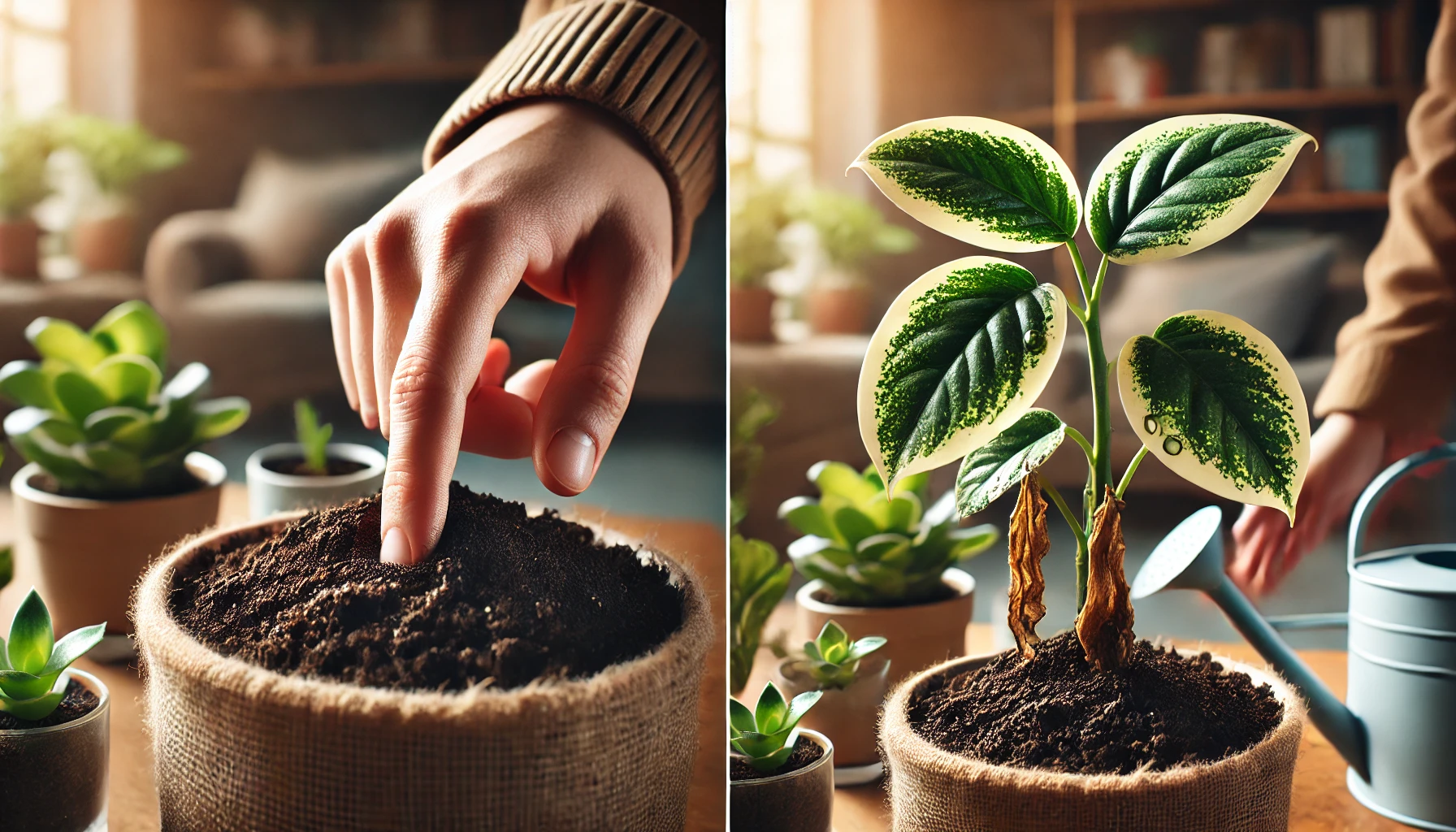
Observe the Leaves
Wilting or drooping leaves are signs that your plant might be thirsty. However, yellowing leaves can also indicate overwatering, so always check the soil before making a decision.
Weight of the Pot
Lifting the pot can help. Dry soil makes the pot feel lighter, while moist soil adds weight. If it feels light, it’s time to water.
Consider the Plant Type
Different plants have different water needs. Succulents and cacti prefer to dry out completely between waterings, while tropical plants like consistently moist soil.
Environmental Factors
Temperature and humidity can affect watering. Hotter temperatures and drier air mean your plant may need water more often.
By monitoring these factors, you’ll keep your plants happy and healthy without the guesswork!
What Type of Light Does My Plant Need?
Understanding the light requirements of your plant is key to its health and growth. Different plants have different light needs, and providing the right environment can make all the difference in their vitality. Here’s a quick guide to help you identify the right type of light for your plant:
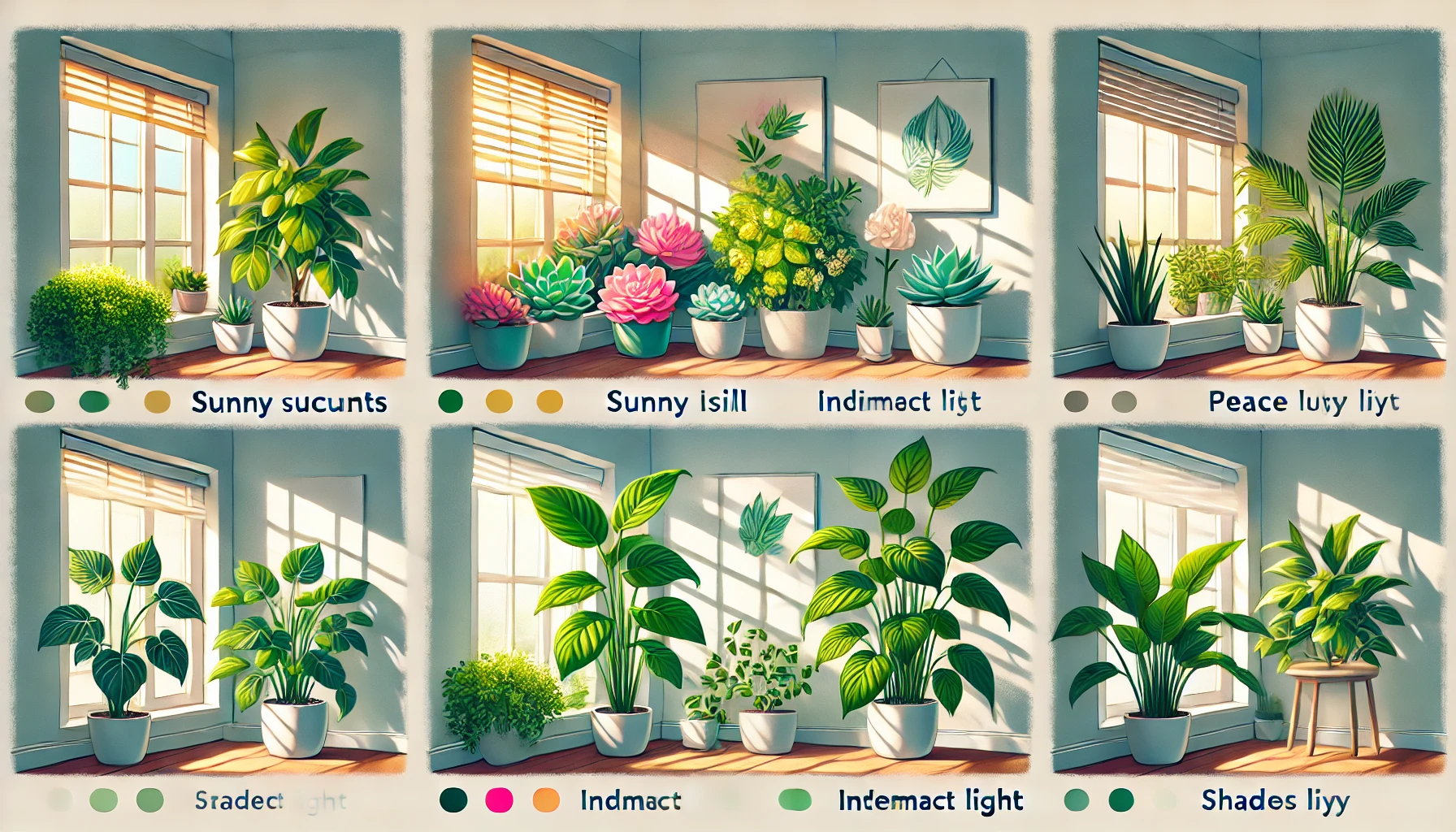
Full Sun
Plants that thrive in full sun need 6-8 hours of direct sunlight per day. These plants, like succulents and tomatoes, require bright, direct light to grow strong and healthy. Place them in spots where the sunlight is unfiltered, such as windowsills facing south or west.
Partial Sun/Partial Shade
Plants needing partial sun or partial shade do well with 3-6 hours of direct sunlight. This is ideal for plants like ferns or hydrangeas. Position them in areas that receive morning sun or dappled light through trees to avoid overheating.
Indirect Light
Some plants, like snake plants and peace lilies, prefer bright, indirect light. This means the sunlight should not hit the plant directly, but the space should still be bright. Place these plants a few feet away from a window or behind a sheer curtain to filter the sunlight.
Low Light
Low-light plants can survive in areas with very little natural light. These include plants like pothos and ZZ plants. They can thrive in rooms with north-facing windows or spaces with minimal sunlight exposure, but avoid complete darkness.
Artificial Light
If your home doesn’t provide enough natural light, consider using grow lights. LED grow lights or fluorescent tubes can mimic sunlight, offering the right spectrum for plant growth. Ensure the light is placed at an appropriate distance to avoid burning the leaves.
Final Tip:
Always monitor your plant’s response to light. If the leaves start turning yellow or brown, it could indicate the plant is getting too much or too little light. Adjust its position to help it thrive!
How Do I Choose the Right Pot for My Plant?
Choosing the right pot for your plant is crucial for its health and growth. Here’s what you need to consider:
Size Matters
The pot should be slightly larger than the plant’s root ball. A pot that’s too big can lead to overwatering, as the soil takes longer to dry out. On the other hand, a pot that’s too small can restrict root growth, limiting your plant’s development. Aim for a pot that’s 1-2 inches larger in diameter than the current root system.
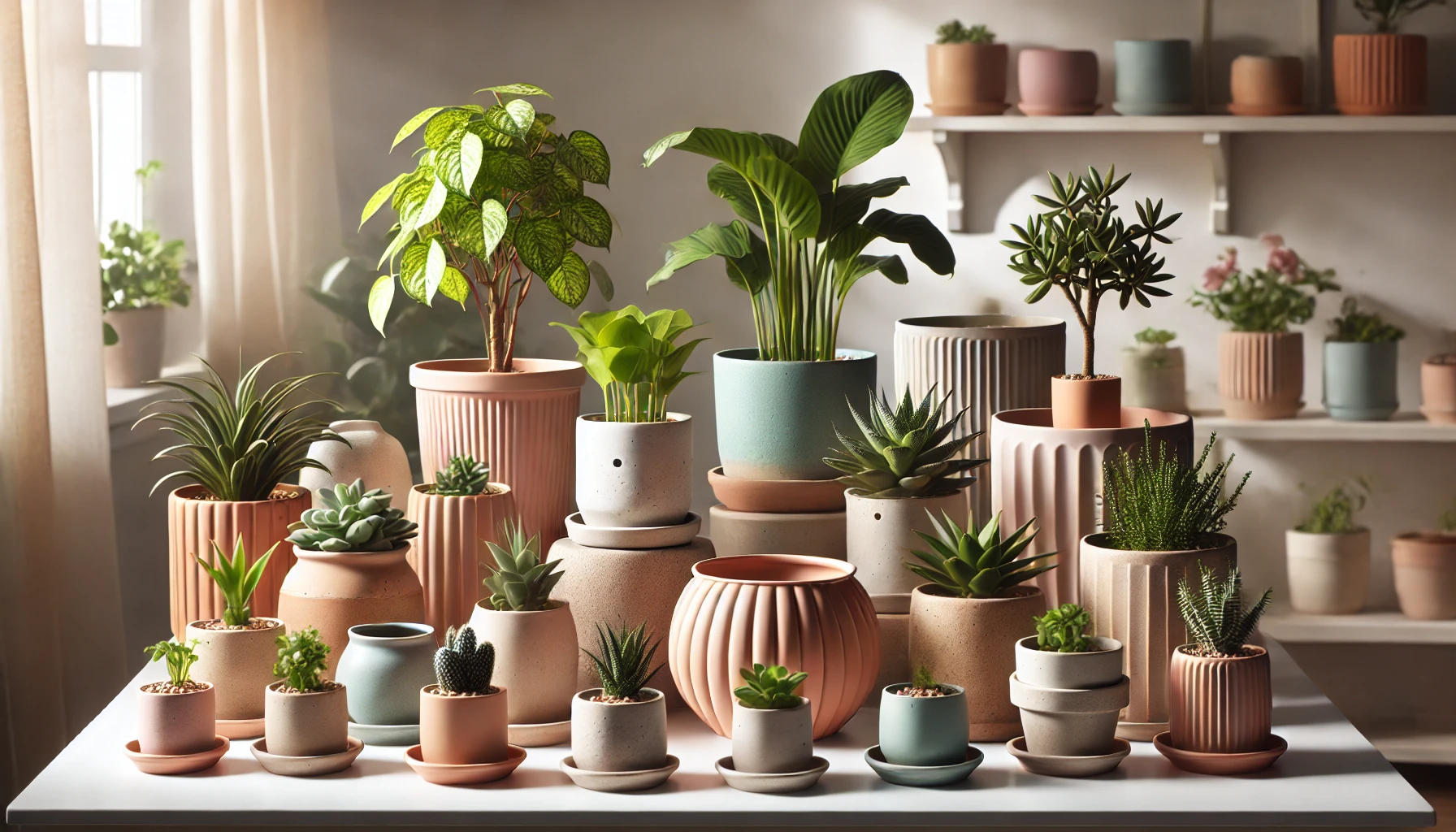
Material of the Pot
- Plastic Pots: Lightweight, affordable, and retain moisture well, making them ideal for plants that require consistent moisture.
- Clay or Terracotta Pots: They are porous and allow for better airflow to the roots. These pots are perfect for plants that prefer well-draining soil, such as succulents and cacti.
- Ceramic Pots: Often glazed, ceramic pots retain moisture but also offer better aesthetics. They’re versatile and suitable for a wide range of plants.
Drainage Holes
Always choose a pot with drainage holes. Without these holes, water can accumulate at the bottom, leading to root rot. If your pot doesn’t have drainage holes, use a different pot or drill some yourself.
Weight and Mobility
Consider how heavy and easy to move the pot is. Larger pots, especially those made of ceramic or concrete, can be hard to move. If you’re placing your plant outdoors or plan to rearrange often, opt for lighter materials like plastic or resin.
Shape of the Pot
Taller pots are great for plants with deep root systems, while wide pots are ideal for plants with shallow roots. Understanding your plant’s root structure will guide you to the perfect shape.
By selecting the right pot, you ensure your plant’s roots have enough space to grow, stay healthy, and thrive. Keep these tips in mind for a happier, healthier plant!
What Are the Best Soil and Fertilizers for Houseplants?
When it comes to growing healthy houseplants, choosing the right soil and fertilizers is key. Here’s a guide to help you select the best options for your indoor garden.
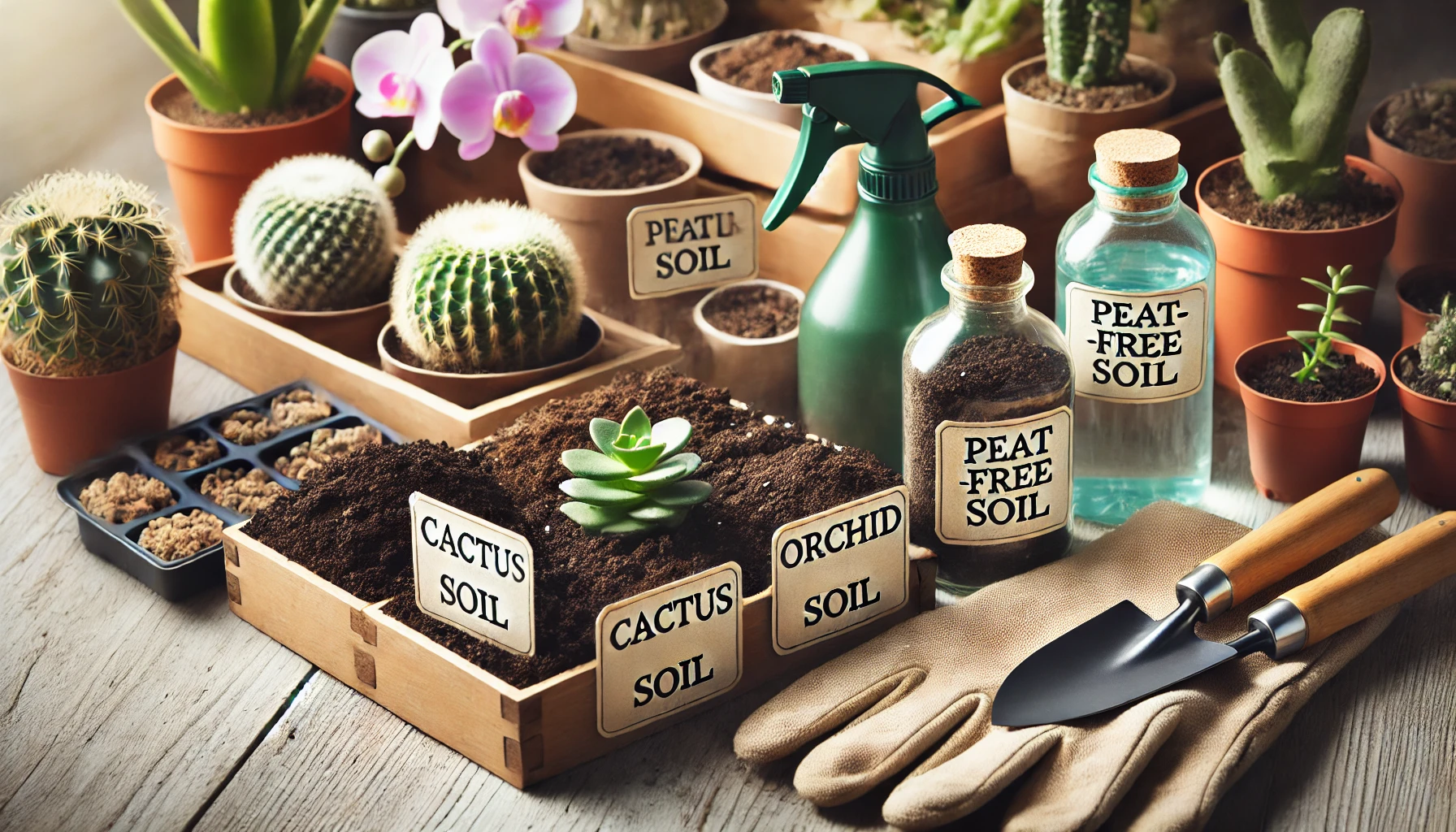
Best Soil for Houseplants:
- Well-Draining Soil: Most houseplants thrive in soil that drains well. A mix of potting soil with added perlite or coarse sand helps prevent waterlogged roots and promotes healthy growth.
- Cactus and Succulent Soil: For drought-tolerant plants, opt for a soil mix designed for cacti or succulents. This mix is lighter, faster-draining, and perfect for these low-maintenance plants.
- Peat-Free Mixes: Peat-based soils can be unsustainable. Instead, choose peat-free mixes that are rich in organic materials like coconut coir, which is more eco-friendly and still provides good drainage and moisture retention.
- Specific Plant Requirements: Some plants, like orchids and African violets, need specialized soil. Orchid mixes are chunky and airy, while African violets prefer slightly acidic, finely textured soil for better root health.
Best Fertilizers for Houseplants:
- Liquid Fertilizers: A balanced liquid fertilizer, like a 10-10-10 (N-P-K ratio), is ideal for most houseplants. Apply it monthly during the growing season to encourage strong, healthy growth.
- Slow-Release Fertilizers: Slow-release pellets are convenient as they release nutrients gradually, providing your plants with a consistent supply of essential elements over time.
- Organic Fertilizers: For a more natural approach, choose organic fertilizers like fish emulsion, seaweed extract, or worm castings. These provide a gentle, long-lasting boost without synthetic chemicals.
- Fertilizing Tips: Always follow the manufacturer’s instructions when applying fertilizers. Over-fertilizing can damage roots, while under-fertilizing can stunt growth. Be sure to water your plants thoroughly after fertilizing to help nutrients reach the roots.
In conclusion, selecting the right soil and fertilizers tailored to your houseplants’ needs ensures healthy growth. With proper care, your indoor garden will thrive beautifully!
How Do I Know if My Plant Is Healthy?
To ensure your plant thrives, it’s essential to recognize the signs of a healthy plant. Here are some key indicators to look out for:

- Vibrant Green Leaves: Healthy plants generally have bright, green leaves, indicating proper hydration and nutrient absorption. Yellowing or wilting leaves may suggest overwatering, underwatering, or nutrient deficiencies.
- Firm and Strong Stems: A healthy plant will have sturdy, upright stems. Soft or weak stems may signal poor growth or a disease. Check if the stems are flexible but not flimsy.
- New Growth: Healthy plants consistently produce new leaves, flowers, or stems. If your plant is showing signs of fresh growth, it’s a great indicator that it’s thriving.
- No Visible Pests or Disease: Regularly inspect your plant for pests or unusual spots on the leaves. Healthy plants remain free of insects, molds, or fungi.
- Even Watering and Balanced Soil: Your plant will thrive when it receives adequate water but not too much. Healthy soil should be slightly moist but never soggy.
By regularly checking these signs, you can ensure that your plant remains in top condition and address any issues promptly.
How Can I Prevent Pests and Diseases?
Preventing pests and diseases is essential for maintaining a healthy Tomatillo plant. Here are some expert tips to protect your plants:
- Healthy Soil and Proper Watering: Start with well-drained, nutrient-rich soil to keep your Tomatillo plant strong. Overwatering can attract pests, so water only when the soil is dry to the touch.
- Mulching: Apply a 2-3 inch layer of mulch around the base of the plant. This helps retain moisture, suppresses weeds, and acts as a barrier to some pests.
- Regular Inspections: Check your plants frequently for signs of pests like aphids, whiteflies, or caterpillars. Early detection allows for quicker intervention.
- Neem Oil or Insecticidal Soap: If pests are spotted, use natural solutions like neem oil or insecticidal soap. These are effective against common garden pests without harming beneficial insects.
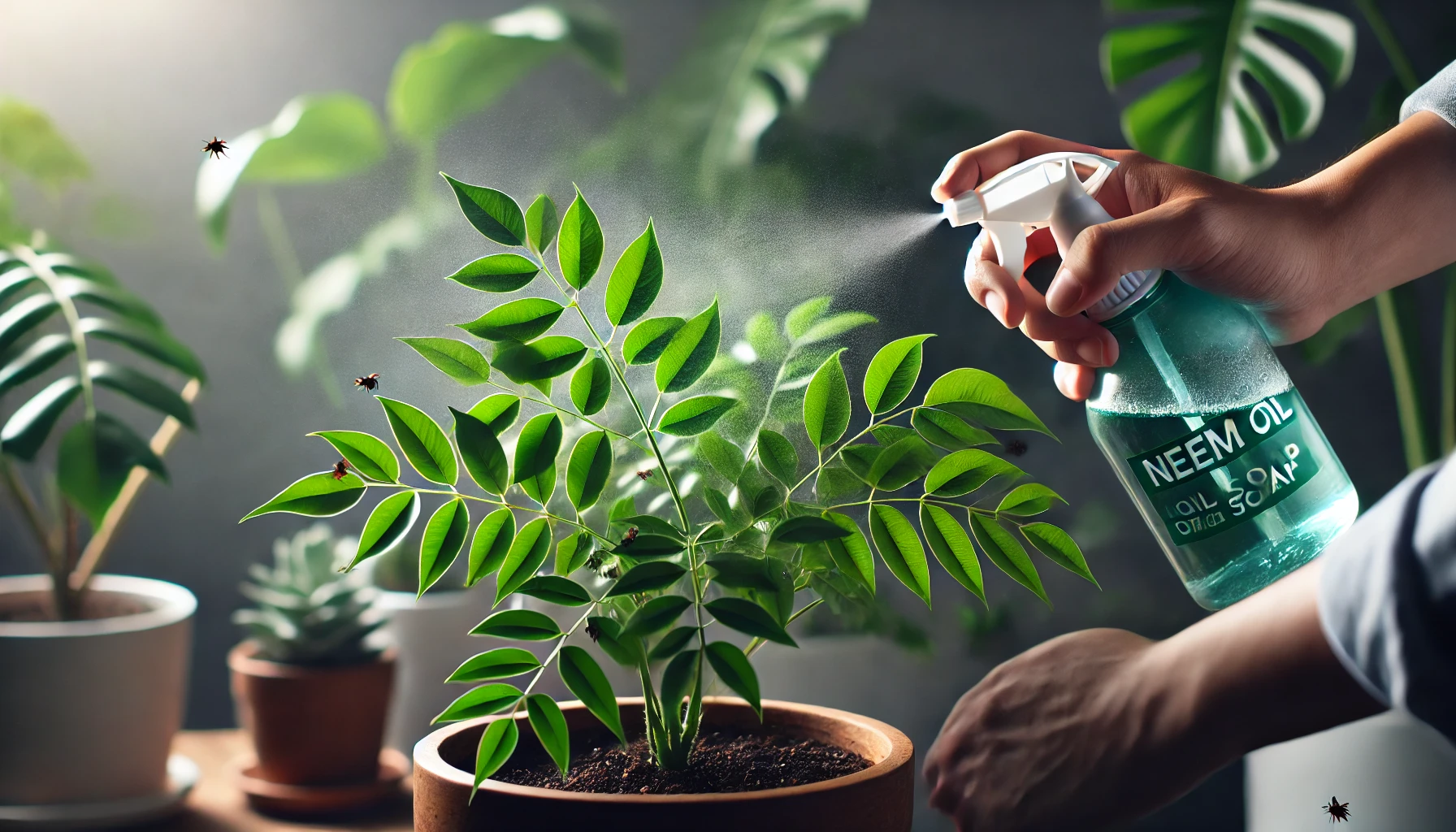
5. Companion Planting: Planting marigolds, basil, or nasturtiums near your Tomatillo plant can help deter harmful insects. These plants act as natural pest repellents.
6. Pruning and Air Circulation: Trim dead or damaged leaves regularly. Good airflow around the plant helps reduce the risk of fungal diseases like blight.
7. Avoid Overcrowding: Space your plants adequately to prevent dense foliage, which can trap moisture and promote the spread of disease.
By following these simple and effective methods, you can minimize the risk of pests and diseases and enjoy a thriving Tomatillo plant.
How Can I Promote Healthy Growth in My Houseplants?
Promoting healthy growth in your houseplants requires attention to key factors such as light, water, soil, temperature, and proper care. Here are some expert tips to help you maintain thriving plants:
- Provide Adequate Light
Each plant has its light requirements. Some thrive in bright, direct sunlight, while others prefer low light conditions. Make sure to place your plants in spots where they get the right amount of light—consider rotating them regularly to ensure even growth. - Water Correctly
Overwatering and underwatering are common mistakes. Always check the moisture level of the soil before watering. For most plants, it’s best to let the soil dry out slightly between waterings. Make sure your pots have drainage holes to prevent waterlogged roots. - Use the Right Soil
Different plants need different types of soil. Ensure that the soil you use matches your plant’s needs. Well-draining soil is key for most houseplants, but some may require specialized mixes, like cactus soil or orchid bark. - Maintain Proper Temperature
Houseplants generally thrive in a range of temperatures between 60°F and 75°F (15°C to 24°C). Avoid placing them near drafts, air conditioners, or heaters, as sudden temperature fluctuations can stress the plants. - Fertilize Regularly
Feed your houseplants with the appropriate fertilizer during the growing season. Use a balanced, water-soluble fertilizer every 4-6 weeks to support healthy growth. Be sure to follow the instructions to avoid over-fertilizing. - Prune and Clean
Regular pruning helps promote healthy new growth and removes any dead or damaged leaves. Dust the leaves occasionally to allow the plant to breathe and photosynthesize properly.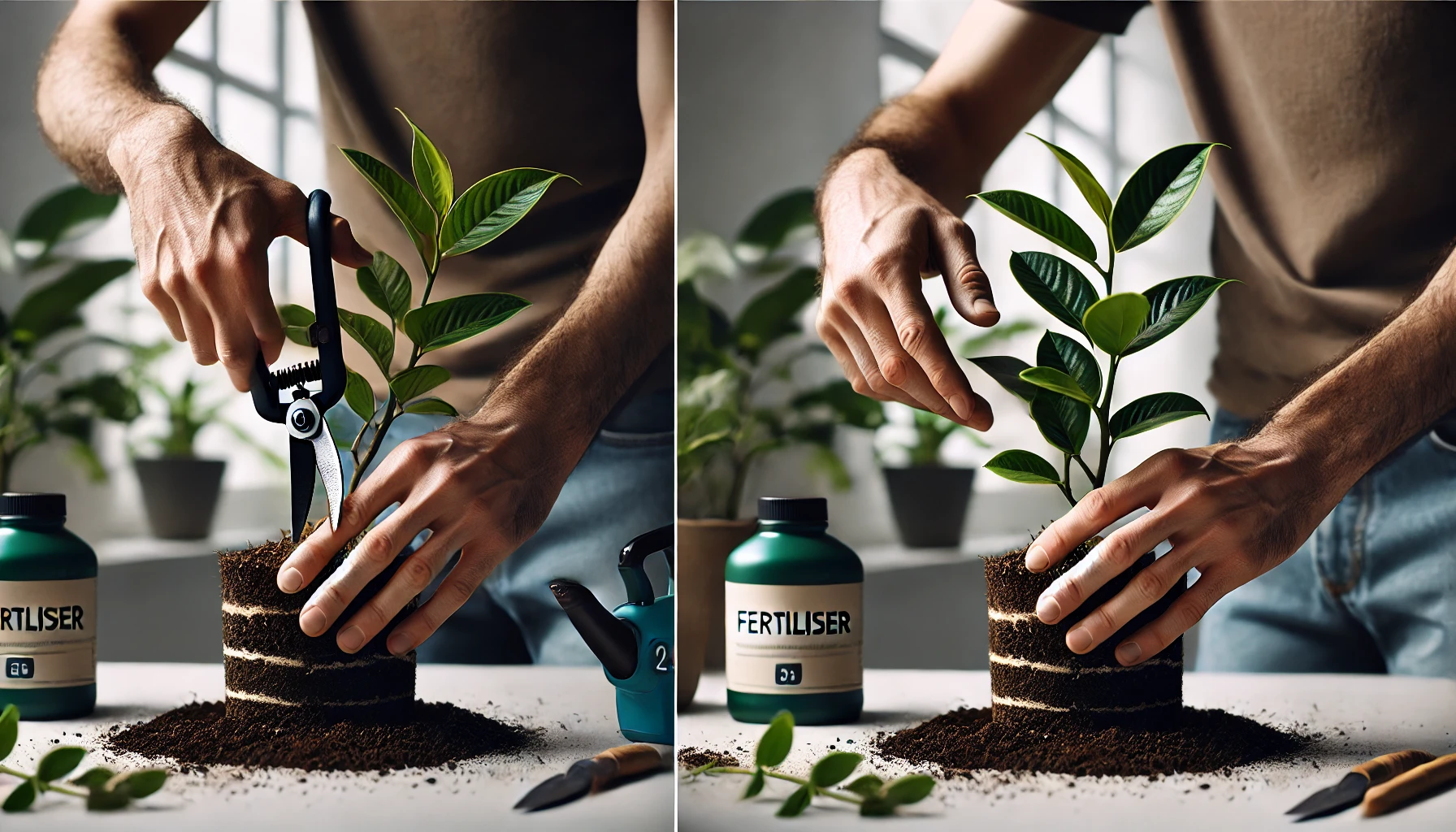
- Repot When Necessary
As your plants grow, they may outgrow their pots. Repotting every 1-2 years ensures that your plants have enough space for root growth. Use a pot that’s 1-2 inches larger than the current one to prevent root-bound plants.
By following these simple steps, you can promote the healthy growth of your houseplants, ensuring they remain vibrant and beautiful for years to come!
Can I Move My Plant Around, or Should It Stay in One Spot?
Moving your plant around can be beneficial, but it’s important to do so carefully. Plants, especially indoor ones, thrive on stability. Here’s what you need to know:

- Light Sensitivity: Most plants have a preferred light condition, and sudden changes in light exposure can stress them out. If you move your plant, try to keep it in a spot with similar light levels to avoid shock.
- Temperature and Humidity: Plants are sensitive to temperature and humidity changes. Moving them to a drafty or excessively hot/cold area can hinder growth. Ensure the new spot maintains consistent conditions.
- Root Health: Constantly moving a plant can disturb its roots, especially if it’s in a container. If you do need to relocate, avoid doing so frequently and check for any signs of stress, like wilting or yellowing leaves.
- Time of Year: During the growing season (spring and summer), plants are more adaptable. However, in fall and winter, they’re in a dormant phase, and too much movement may lead to stunted growth.
- Acclimatization: If you’re changing its position, do it gradually. This allows the plant to adjust to new light levels, temperature, and humidity. Slowly moving it a few inches each day helps minimize stress.
In Summary: It’s okay to move your plant, but only when necessary and with care. Keep in mind its specific light, temperature, and moisture needs, and avoid frequent relocations to ensure healthy growth.
Becoming a plant parent is a rewarding experience, and with the right knowledge, it’s easier than ever to keep your plants healthy and thriving. By addressing these common beginner houseplant questions, we’ve covered the essentials that will help you confidently care for your new plants. Remember, every plant is unique, and it may take a little time to figure out what works best for yours. The most important thing is to stay curious, be patient, and enjoy the process of learning and growing alongside your plants. With the tips provided, you’re well on your way to becoming a successful plant parent! Keep nurturing your green friends, and don’t hesitate to ask more questions along the way—your plants will thank you for it.
Frequently Asked Questions(FAQ)
How do I know if my houseplant is getting enough light?
Plants need light to thrive, but not all plants require the same amount. Look for signs such as leggy growth (too little light) or sunburnt leaves (too much light). Generally, a plant will do well with bright, indirect light. If you’re unsure, try placing it near a window with filtered light or use grow lights for low-light plants.
How often should I water my houseplants?
Watering frequency depends on the type of plant and the environment. A general rule is to wait until the top inch of soil feels dry before watering. Plants like succulents need less water, while tropical plants may require more frequent watering. Always check soil moisture and avoid overwatering, which can lead to root rot.
What is the best way to avoid overwatering my plants?
Overwatering is a common mistake for beginners. To prevent it, ensure your pots have drainage holes and use soil that drains well. Check the soil moisture before watering by sticking your finger into the soil—if it’s still damp, wait a few more days. It’s better to underwater than to overwater.
What are the signs of a healthy houseplant?
Healthy plants typically have vibrant, green leaves, firm stems, and consistent growth. If your plant has yellowing leaves, drooping, or stunted growth, it may indicate issues with light, water, or nutrients. Regular observation and adjusting care routines can keep your plant healthy.
Can I use regular potting soil for all types of plants?
Not all plants thrive in the same type of soil. While standard potting soil is fine for most plants, succulents and cacti require well-draining soil, while tropical plants might benefit from a more moisture-retentive mix. Be sure to choose soil suited to your plant’s specific needs.
What should I do if my plant is infested with pests?
If you spot pests like aphids or spider mites, remove them with a damp cloth or by spraying the plant with insecticidal soap or neem oil. It’s important to inspect your plants regularly, especially after bringing new ones home. Isolate infested plants to prevent the pests from spreading to other plants.
How do I know when to repot my houseplant?
Repotting is needed when your plant outgrows its pot, which typically happens every 1-2 years. Signs it’s time to repot include roots growing out of the drainage holes or roots that have filled the entire pot. Always choose a pot that’s 1-2 inches larger than the current one and ensure good drainage.
What are some easy plants for beginners?
If you’re just starting out, consider low-maintenance plants like snake plants, pothos, ZZ plants, or peace lilies. These plants can tolerate a range of conditions, including low light and occasional neglect, making them ideal for beginners.
How can I keep my houseplant thriving during winter?
In winter, plants may need less water as they enter a dormant phase. Ensure they still receive adequate light, either through natural sunlight or artificial grow lights. Keep plants away from cold drafts and check the humidity level—dry indoor air can be tough on plants.
How can I tell if I’m overfeeding my plants with fertilizer?
Overfertilizing can cause a plant’s leaves to turn yellow or brown, or it might show signs of burnt edges. If your plant is not responding well to fertilizers, try reducing the amount or frequency. Always follow the recommended guidelines on the fertilizer packaging for best results.
